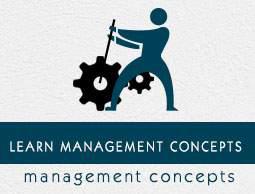Traditional Project Management
Introduction
Project management is a practice that can be found everywhere. Project management does not belong to any specific domain or a field. It is a universal practice with a few basic concepts and objectives.
Regardless of the size of the activities or effort, every 'project' requires project management.
There are many variations of project management that have been customized for different domains. Although the basic principles are the same among any of these variations, there are unique features present to address unique problems and conditions specific to each domain.
There are two main types of project management:
- Traditional Project management
- Modern Project management
The traditional project management uses orthodox methods and techniques in the management process. These methods and techniques have been evolved for decades and are applicable for most of the domains. But for some domains, such as software development, traditional project management is not a 100% fit.
Therefore, there have been a few modern project management practices introduced to address the shortcomings of the traditional method. Agile and Scrum are two such modern project management methods.
Definition of Traditional Project Management
First of all, having an idea of the project management definition is required when it comes to discussing traditional project management. Following is a definition for traditional project management.
PMBOK defines the traditional project management as 'a set of techniques and tools that can be applied to an activity that seeks an end product, outcomes or a service'.
If you Google, you will find hundreds of definitions given by many project management 'gurus' on traditional project management. But, it is always a great idea to stick to the standard definitions such as PMBOK.
Traditional Project Management Example
You are working for a company where everyone has a desktop or a laptop computer. Currently, the company uses Windows XP as the standard operating system across the company.
Since Windows XP is somewhat outdated and there is a newer version called Windows 7, the management decides on upgrading the OS. The objective of the upgrade is to enhance the productivity and reduce the OS security threats.
If you have one office with about 100 computers, it could be considered as a medium scale project. In case if your company has 10-15 branches, then the project is a large scale one with high complexity. In such case, you will be overwhelmed by the tasks at hand and will feel confused. You may have no clue of how to start and proceed. This is where traditional project management comes in.
Traditional project management has everything required for managing and successfully executing a project like this. Since this type of project does not require any customizations, modern project management methods are not required.
The company can hire or use an existing project manager to manage the OS upgrade project. The project manager will plan the entire project, derive a schedule, and indicate the required resources.
The cost will be elaborated to the higher management, so everyone knows what to expect in the project. Usually, a competent project manager knows what processes and artifacts are required in order to execute a project. There will be frequent updates coming from the project manager to all stakeholders.
In addition to the regular project activities, project manager will attend to risk management as well. If certain risks have an impact on the business processes, the project manager will suggest suitable mitigation criteria.
Conclusion
Traditional project management is a project management approach that will work for most domains and environments. This approach uses orthodox tools and techniques for management and solving problems.
These tools and techniques have been proven for decades, so the outcome of such tools and techniques can be accurately predicted.
When it comes to special environments and conditions, one should move away from traditional project management approach and should look into modern methods that have been specifically developed for such environments and conditions.


